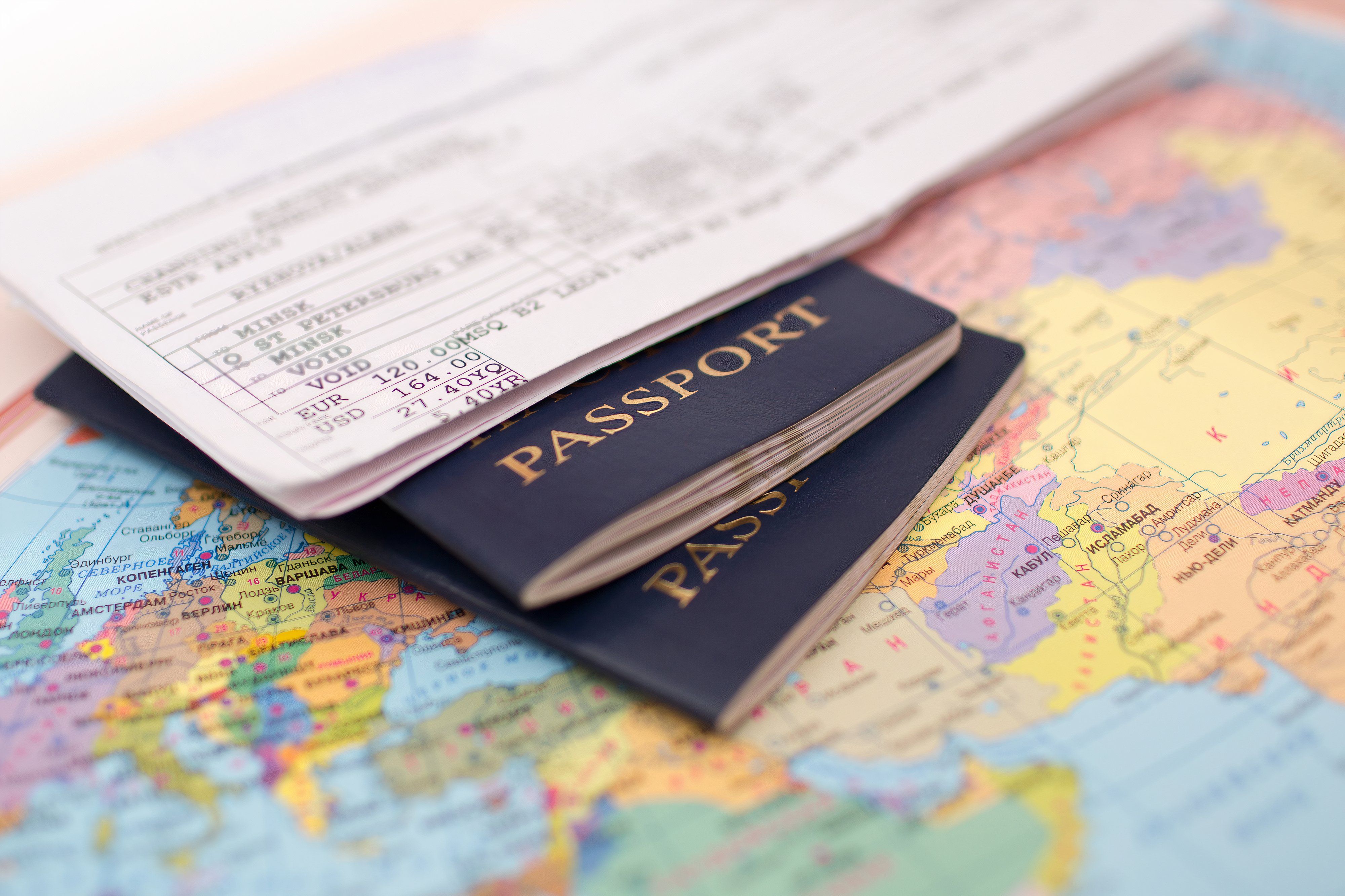Travel
Europe visa: when must I apply for an Etias and how will travel from the UK work

British travellers to the European Union and wider Schengen Area will need to apply in advance for an online permit to visit from November 2025, according to current plans in Brussels.
EU officials have confirmed that the much delayed “entry-exit system” will take effect on 10 November 2024. From that date, every UK traveller entering the Schengen Area must, in theory at least, be fingerprinted and provide a facial biometric. (The requirement will not apply to British visitors to Ireland and Cyprus, which are in the European Union but outside Schengen.)
Six months later after EES takes effect, ie in May 2025 according the latest plan, the Electronic Travel Information and Authorisation System (Etias) will launch.
What is Etias?
British travellers and those from all other “third-country visa-free nationals” (as the UK chose to become after Brexit) will need provide information in advance so that frontier officials know more about them on arrival – and to identify people who the EU wants to keep out.
Etias, the next step in tightening frontier controls, is a online permit system that is similar to the US Esta scheme (but cheaper at €7/£6 and valid for longer: three years, or until the passport reaches three months to expiry, whichever comes first).
“UK nationals are required to have a valid Etias travel authorisation if they travel to any of the European countries requiring Etias for a short-term stay (90 days in any 180-day period),” says the EU.
“Its key function is to verify if a third-country national meets entry requirements before travelling to the Schengen area.”
When will I need one?
The European Union says: “Starting in the first half of 2025, some 1.4 billion people from over 60 visa-exempt countries are required to have a travel authorisation to enter most European countries.”
That sounds ominous for British travellers to Europe in summer 2025. But fortunately “required” is not accurate in that statement
The EU also says: “The launch of Etias in mid-2025 will be followed by a transitional period of at least six months. This means that, for travel during this time, travellers should already apply for their Etias travel authorisation, but those without one will not be refused entry as long as they fulfil all remaining entry conditions.”
So it will not be mandatory for prospective UK visitors to apply online for permission to enter the Schengen Area until November 2025 at the earliest.
How will I apply?
At the heart of the system is an Etias website, with an app to follow (any apps that currently purport to be official EU Etias apps are imposters).
Travellers will be required to submit personal information including name, address, contact details in Europe and passport data. They must also state an occupation (with job title and employer). Students must give the name of their educational establishment.
The applicant must give details of any serious convictions in the past 20 years.
Travellers must also provide the reason for their journey (holiday, business, visiting family, etc), specify the Schengen Area country they will first arrive in, and provide the address of their first night’s stay – which will pose a problem for tourists who like to make plans as they go along.
The fee is €7 (£6) for all applicants aged 18 to 70. While those under 18 or over 70 will still need to apply for and hold an Etias, they need not pay.
What happens to the information?
Every application will be checked against EU and relevant Interpol databases, as well as “a dedicated Etias watch-list”.
The system will be tuned to pick out individuals suspected of being involved in terrorism, armed robbery, child pornography, fraud, money laundering, cybercrime, people smuggling, trafficking in endangered animal species, counterfeiting and industrial espionage.
In a case of mistaken identity, will I be able to appeal?
Yes. If you are suspected of one or more of the above offences, but in fact have led a blameless life, you will be allowed to argue your case. Details of how to appeal will be included with the notice of rejection.
How far in advance must I apply?
The aim is for an Etias to be granted in most circumstances within minutes, though even a straightforward application could take up to four days.
If an application is flagged (ie there is a “hit” with one of the databases) the prospective visitor may be asked to provide additional information. Alternatively, says the EU, the applicant may be asked “to participate in an interview with national authorities, which may take up to additional 30 days”.
The European Union says: “We strongly advise you to obtain the Etias travel authorisation before you buy your tickets and book your hotels.”
If I get an Etias, must I print anything out?
No. The frontier guard will get all the information they need from the passport you used to apply for your Etias.
Is Etias a visa?
This answer to this common question depends on your interpretation of semantics. Officially, it is exactly the opposite of a visa. Europe says that Etias is “a pre-travel authorisation system for visa-exempt travellers”. It is a similar concept to the US Esta and Canadian eTA, which are not technically visas.
But Etias requires visitors to:
So I contend it amounts to a normal person’s understanding of a visa.
Once I have an Etias, am I guaranteed admission to the Schengen Area?
No. “Mere possession of a travel authorisation does not confer an automatic right of entry,” says the EU. As with the US, travellers can be turned away for any reason, with the Etias permission rescinded.
Must I apply for an Etias every time I travel to Europe?
No. The permit will be valid for three years, or until your passport reaches three months before expiry, whichever is the earlier. (Note also that British passports must not be over 10 years old on the day of entry to the European Union.)
Will I need an Etias to travel to Ireland?
No. The Common Travel Area incorporating the UK, Ireland, the Isle of Man and the Channel Islands transcends European Union rules, and in any event, Ireland is not in the Schengen area.
If I have a long-stay permit from one of the EU nations, must I obtain an Etias?
No.
How are people without internet access supposed to apply?
They will be expected to get a friend, a family member or a travel agent to make the application for them, in the same way as the US Esta and similar schemes.
Just remind us about the 90/180 day rule?
This rule, to which the UK asked to be subject after leaving the European Union, means that British travellers cannot stay more than 90 days in any stretch of 180 days.
As an example of what it means: if you were to spend the first 90 days of 2025 (January, February and almost all of March) in the Schengen area, you would not be able to return until late June.
Is the UK being punished because of Brexit?
No. Work on strengthening the European Union’s external border was already under way before the UK referendum on membership in June 2016. Initially British officials participated in plans for the entry-exit system.
Neither the EES nor Etias would be relevant if the UK was still in the EU. But the nation voted to leave the European Union and the British government negotiated for British travellers to be classified as third-country nationals – triggering extra red tape.
Will Etias be the next online scam?
Yes. As with other online travel permits, commercial intermediaries are allowed.
But according to Frontex – the European Border and Coast Guard Agency, which is implementing Etias – there are many scam sites out there that are likely to apply fees way above the basic €7 (£6).
Any site other than europa.eu/etias is unofficial and should not be trusted.
One “imposter” site claims to have processed 671 applications already; this is impossible since no applications have been processed anywhere.
Another site offers a 40 per cent discount for early applications. Some use the EU logo, which is illegal.
Frontex also warns about the risk of identity theft if personal information is provided to imposter sites.










